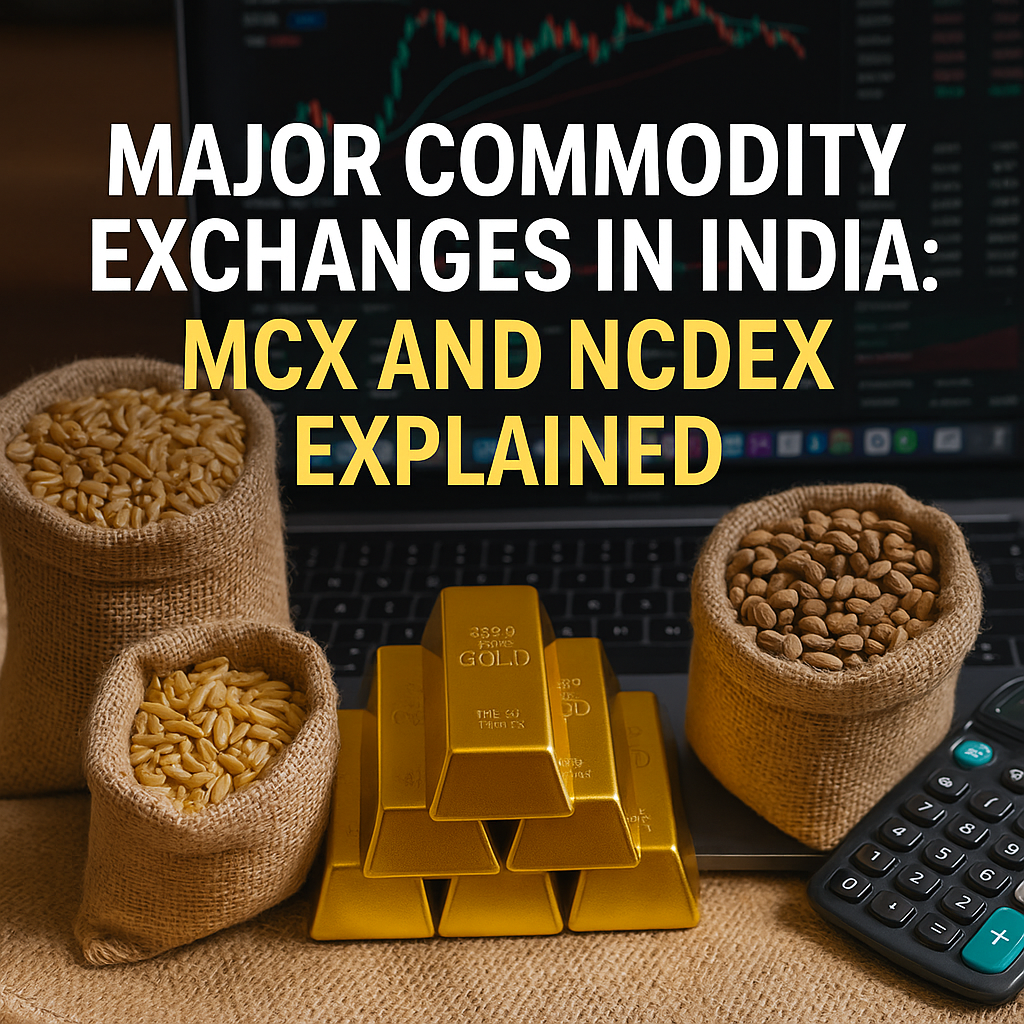If you’re planning to start commodity trading in India, one of the first things you need to understand is where these trades happen. That’s where MCX and NCDEX come in—India’s two major commodity exchanges. Whether you’re looking to trade in gold, crude oil, or agricultural products, these exchanges play a central role in enabling transparent and regulated trading.
In this blog, we’ll break down what these exchanges do, how they differ, and why knowing about them is important for your trading journey.
1. What is a Commodity Exchange?
A commodity exchange is a regulated marketplace where traders buy and sell commodity contracts—like gold, silver, crude oil, wheat, and more. These exchanges standardize contracts and ensure safety, transparency, and liquidity for participants. In India, two major platforms serve this purpose: MCX and NCDEX.
2. Overview of MCX (Multi Commodity Exchange)
The MCX is India’s largest commodity derivatives exchange, established in 2003 and headquartered in Mumbai. It is best known for trading in non-agricultural commodities such as:
-
Gold
-
Silver
-
Crude Oil
-
Natural Gas
-
Copper, Zinc, and other metals
MCX operates under the regulation of SEBI (Securities and Exchange Board of India) and offers real-time price discovery, robust clearing mechanisms, and global benchmarking.
✅ Highlight: If you’re interested in energy or precious metals, MCX is where most of the action happens.
3. Overview of NCDEX (National Commodity and Derivatives Exchange)
Launched in 2003 and based in Mumbai, the NCDEX is India’s leading exchange for agricultural commodities. Products traded include:
-
Wheat
-
Chana (Gram)
-
Guar Gum
-
Soybean
-
Mustard Seed
It promotes structured trading in the agri-commodities market, providing farmers, traders, and processors a regulated and organized marketplace.
✅ Highlight: If your focus is on farming or agricultural-based investments, NCDEX is the better fit.
4. Key Differences Between MCX and NCDEX
| Feature | MCX | NCDEX |
|---|---|---|
| Primary Focus | Non-agri commodities (Gold, Oil) | Agricultural commodities (Grains) |
| Volume of Trades | Higher overall volume | Lower, more niche products |
| Global Linkages | More aligned with international markets | Mostly domestic agri-market |
| Traders Involved | Retail + Institutional + Hedgers | Farmers, Agri-traders, Institutions |
5. Why Understanding Exchanges Matters for Traders
Knowing how MCX and NCDEX operate helps you make smarter decisions:
-
You can align your strategies with market volume
-
Choose commodities based on sector interests
-
Understand trading hours, margin rules, and contract sizes
-
Avoid confusion between platforms and focus on one that fits your goals
For example, a trader interested in gold futures should be active on MCX, while someone looking to hedge prices in soybean should stick with NCDEX.
6. Final Thoughts
If you’re serious about commodity trading in India, understanding the role of MCX and NCDEX is essential. These two exchanges give you access to diverse products, real-time pricing, and a secure trading environment.
Choosing between them depends on your trading goals—whether you’re into precious metals, energy, or agriculture. The good news? You can open accounts that allow access to both, giving you flexibility and wider opportunities.
So, take your time, learn the products, and start trading with confidence on the right exchange!




